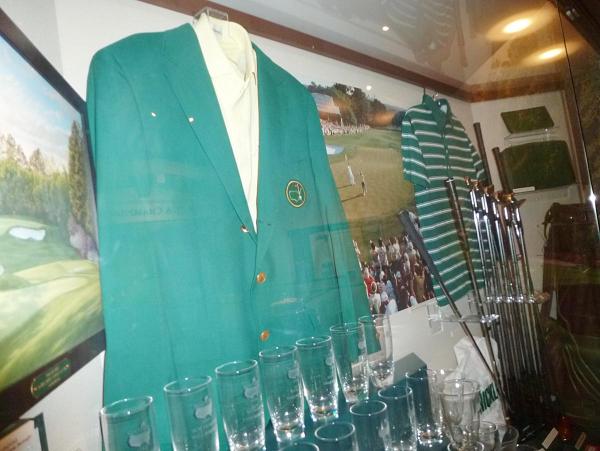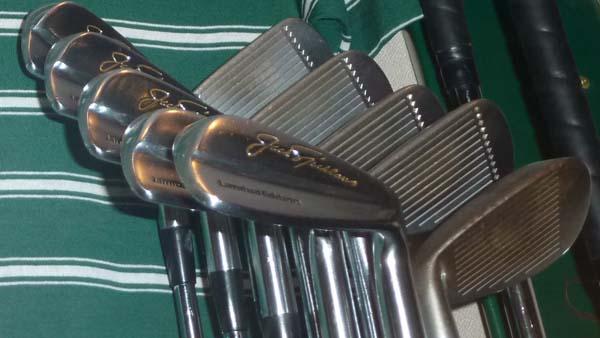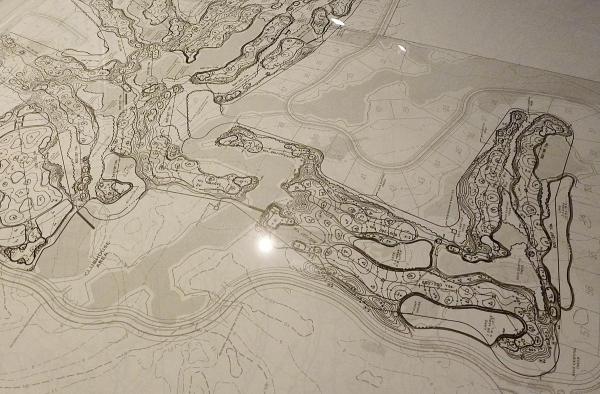 The image of Jack Nicklaus holding his putter aloft after making birdie on No. 17 at Augusta National to take the lead in the 1986 Masters has become an iconic symbol of major championship golf. A 46-year-old, supposedly past his prime, Nicklaus became that year the oldest player to win the Masters. Only Julius Boros, who won the 1968 PGA Championship at age 48, was older when he won a major.
The image of Jack Nicklaus holding his putter aloft after making birdie on No. 17 at Augusta National to take the lead in the 1986 Masters has become an iconic symbol of major championship golf. A 46-year-old, supposedly past his prime, Nicklaus became that year the oldest player to win the Masters. Only Julius Boros, who won the 1968 PGA Championship at age 48, was older when he won a major.Indeed, no golfer is associated more with major championship golf than is Nicklaus. And no image has become more synonymous with the Masters than that image of the Golden Bear staring down the hole as the ball dropped into the bottom of the cup giving him the lead in his 18th and final major championship.
Nicklaus' achievements on and off the course are on display at the Jack Nicklaus Museum on the Ohio State campus.
A bronze edifice that depicts the Golden Bear during the prime of his career greets visitors in the foyer and points the way to a series of exhibit halls and theaters that reflect his accomplishments in junior, amateur and professional golf, family life at home and his ongoing exploits as one of the game's leading golf course architects.
Nicklaus has donated literally thousands of items to the museum, including trophies, golf clubs and bags, photographs, clothing worn during memorable victories, original blueprints from golf course design projects and lettermen's jackets and sweaters from his high school days at Upper Arlington as well as his time as a collegian at Ohio State.
The first exhibit pays homage to the game's golden era and early pioneers, including the late, great Bobby Jones who Nicklaus credits for helping mold his career. Other exhibits include: displays entitled Decades of Nicklaus, which details his career progression including his achievements as a player and/or captain in eight Ryder Cup events; Major Championships, including the Masters, U.S. Open, British Open, PGA Championship and the U.S. Amateur, which he won a combined 20 times; Nicklaus' Family Room; the Memorial Tournament; Nicklaus Design Gallery; an art gallery; and finally an exhibited dedicated to the Ohio State turfgrass management program that educates visitors on the contributions to the game made by university researchers, extension specialists and educators as well as the science behind turfgrass management.
Nicklaus grew up in Upper Arlington, which is a driver and wedge from the Ohio State Golf Club. As a junior golfer, he won numerous tournaments, including the Ohio State Junior championship a record five consecutive years beginning at age 12.
Nicklaus, who could have played anywhere, chose Ohio State where he was the NCAA Division I medalist in 1961, the same year he turned professional, and twice won the U.S. Amateur (1959, 1961).
 Video theaters throughout the museum include video highlights, narrated by legendary sportscasters such as Jack Whitaker, that pay homage to Nicklaus' career accomplishments throughout various stages of his career.
Video theaters throughout the museum include video highlights, narrated by legendary sportscasters such as Jack Whitaker, that pay homage to Nicklaus' career accomplishments throughout various stages of his career.Another common theme throughout the exhibit is the importance of family on Nicklaus' career, including father Charlie who played a key role during his formative junior career. One of the last stops on the tour is a replica of the family room in Nicklaus' home in North Palm Beach, Florida. A looping video that plays on a TV monitor in the room includes reflections of his five children on what it was like growing up with the Golden Bear. Nicklaus recounts through the many years on tour that he never spent more than 14 consecutive days away from home, and how, no matter where he was at the time, he returned home for the birth of each child.
Son Jack II tells visitors how his dad gained notoriety for fainting in the hospital at the birth of each child: "Maybe he was amazed by the beginning of life, or it's a commentary on how ugly his kids are when they're born."
There is a great deal of space throughout the museum devoted to Nicklaus' wife, Barbara, without whose help, he says, his success would not have been possible.
And there is evidence of a lot of success here.
Literally hundreds of items are on display that reflect Nicklaus' efforts at Augusta National, where he won the Masters Tournament six times (1963, 1965, 1966, 1972, 1975, 1986), including the club's trademark green jacket given each year to the winner. The display also includes the putter used during his win in 1966, shirt worn during the final round of his victory in 1975, the Macgregor irons he played during his infamous win in 1986 when he became the tournament's oldest winner at age 46, a feat that still stands today, as well as the signed scorecards from each round of that historic event.
The Decades of Nicklaus exhibit shows how Nicklaus took the professional golf world by storm in the 1960s, winning 30 tournaments, including six majors. But it is when visitors take a step into the 1970s that they are see firsthand Nicklaus' greatest period of success.
 Known derisively as "Fat Jack" during the early stages of his career, a slimmed down Nicklaus exploded in the 1970s, winning 39 times, including eight majors, including that infamous final Masters victory in 1986.
Known derisively as "Fat Jack" during the early stages of his career, a slimmed down Nicklaus exploded in the 1970s, winning 39 times, including eight majors, including that infamous final Masters victory in 1986.As successful as Nicklaus was on the course as a player, he's nearly equaled those feats as a designer, with his name attached to 380 courses on six continents. The exhibit includes the original blueprints of the Nicklaus-designed Bear's Club course in Jupiter, Florida. The works include pages of original designs, including separate plans detailing hole strategy, contouring, drainage and grassing of the course.
The last stop on the tour is the Nicklaus Theater that features a final video tribute to Nicklaus' career, during which he became known - and disliked by some - for his deliberate play. In a final parting shot, fellow World Golf Hall of Famer Gary Player, in a video on display in the museum's Nicklaus Theater, takes good-natured jabs at his contemporary's one-time weight issues and the deliberate pace of play for which Nicklaus was famous.
"One bad thing was how many times Arnold (Palmer) and I had to wait," Player says. "If he had been a racehorse and been that slow, he would have been shot."
Regardless of what one thinks of Nicklaus' slow play or the courses he designed, his contributions to the game can't be overlooked.

